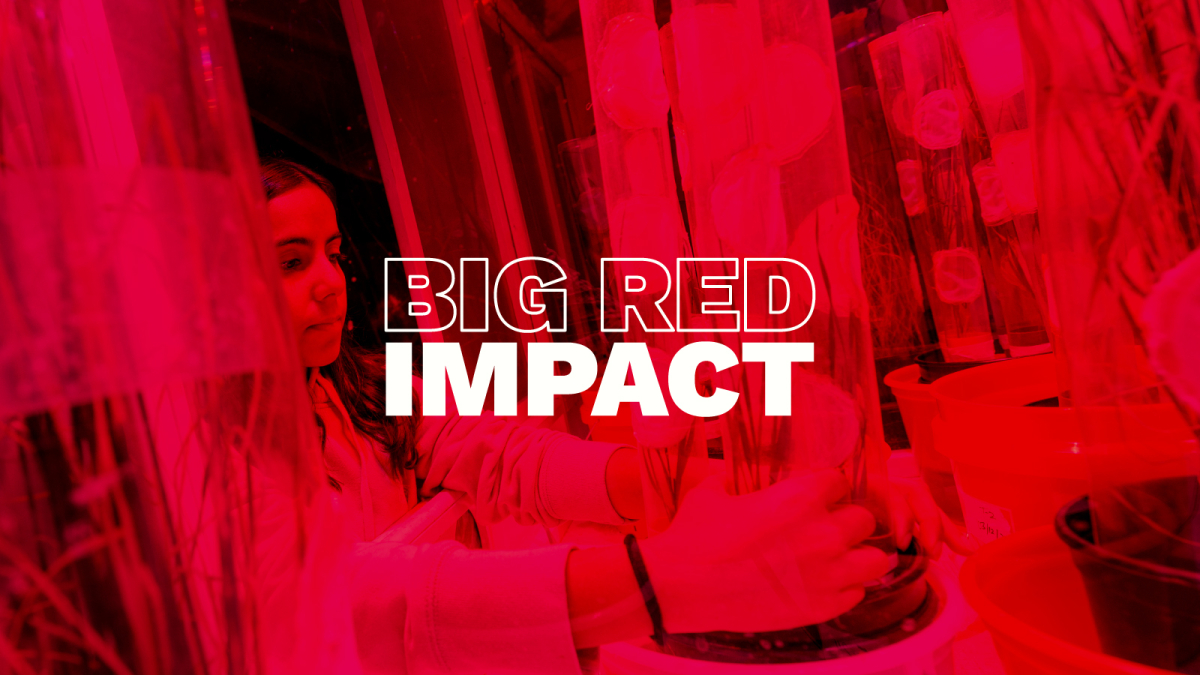by Troy Fedderson | University Communication and Marketing

Fueled by more than a decade of excellence, the research and creative activity enterprise at the University of Nebraska–Lincoln is making big impacts statewide and around the world.
“The University of Nebraska–Lincoln is a community of scholars dedicated to changing the world through discovery, creativity and innovation,” said Chancellor Rodney D. Bennett. “That shared passion to improve and inform society lies at the heart of everything we strive for as Nebraska’s flagship, land-grant university.”
In the last decade, the university’s total research expenditures have grown 37% – from $266.5 million in 2013 to $366 million in 2023. And, since 2010, Husker research teams have combined to set a record for total expenditures in each fiscal year.
UNL has also experienced tremendous growth in externally sponsored federal funding, increasing from $115 million in 2021 to $163 million in 2023.
Multiple research teams have contributed to the university’s record growth. Leading efforts include:
- $51 million from the National Science Foundation for Huskers to take over leadership from Princeton University in coordinating the U.S. physics community at the Large Hadron Collider in Switzerland.
- $35 million in awards from three Centers for Biomedical Research Excellence. Working groups include the Nebraska Center for the Prevention of Obesity Diseases; Nebraska Center for Integrated Biomolecular Communication; and the Rural Drug Addiction Research Center. These centers are strengthened by collaborations with the University of Nebraska Medical Center.
- $15 million from the Department of Commerce to push the boundaries of robotics innovation and serve as an economic driver for Nebraska and the region.
- Two Andrew W. Mellon Foundation awards that rank as the university’s largest ever for arts and humanities research. They include $1.58 million award supporting a reconciliation project with the Otoe-Missouria Tribe and a $1 million project to elevate the university as a leader in the relationship between U.S. law and race in American history.
The world also turns to Nebraska for multiple areas of research expertise. Those include nearly all things agriculture; drought monitoring and mitigation; weather extremes; roadside safety; working with indigenous peoples; social and behavioral sciences; and plant science innovation.
“Research, creative activity and innovation at UNL advances Nebraska, the nation and the world,” said Sherri Jones, interim vice chancellor for research and economic development. “The depth and breadth of the work happening here is simply incredible — and should be a point of pride for our campus community and all of Nebraska.”
Research aims coupled with support programs offered by the Office of Research and Economic Development are also generating more honors for individual Nebraska researchers. These include record numbers of career development awards from the NSF, Department of Energy and Office of Naval Research.
“We have a number of programs in place — such as Research Development Fellows Program, Research Leaders Program, and NSF CAREER Club — to help our researchers develop strong programs of research and more high-quality proposals,” Jones said. “These strategic supports along with our Grand Challenges initiative are helping develop more interdisciplinary teams and lead to greater individual and collective successes.”
Faculty members who participate in the NSF CAREER Club have a 50% success rate in competing for the awards. That total is well above the national average for funded NSF proposals, Jones said.
In 2023, eight Nebraska researchers earned CAREER awards, placing UNL among 11 academic institutions to receive six or more of the honors. The university has already earned six CAREER awards to date in 2024, a tally that ranks second among Big Ten universities. Additional CAREER awards are pending.
Faculty are earning more U.S. patents, helping advance the UNL/UNMC ranking in the National Academy of Inventors’ Top 100 list for the seventh-straight year. And, in 2023, faculty were awarded 87 external recognitions, 15 of which are listed by the National Research Council as some of the most prestigious honors available.
Some of the top individual awards include:
- Sue Sheridan, George Holmes University Professor of school psychology, being the first UNL faculty member named a fellow of the National Academy of Education;
- Liyan Qu, associate professor of electrical and computer engineering, becoming the first woman from UNL to be elected a senior member of the National Academy of Inventors; and
- Yiqi Yang, Charles Bessey Professor of textiles, merchandising and fashion design, earning the Olney Medal for Outstanding Achievement in Textile Science from the American Association of Textile Chemists and Colorists.
The university is also home to an array of world-renowned research and art collections, including those housed at the University of Nebraska State Museum, Sheldon Museum of Art and the International Quilt Museum.
Looking to the future, Jones sees nothing short of greater levels of success for the university’s research and creative activity enterprise.
“We expect that our research expenditures will set a record again this year. And our total awards received is also increasing, which is a positive indicator for future growth,” Jones said. “Based on our momentum and the drive of our research teams, I do not see that slowing down."
Sources expected to support that growth include a growing number of industry partnerships and projects with community organizations.
“Research is a cornerstone of our university’s mission — it drives innovation, fosters economic growth and enriches lives,” Bennett said. “This university has had an incredible decade of success and now we need to build on our momentum. Through our collaborative research efforts, UNL will continue to unlock new opportunities, inspire breakthroughs, and build a brighter future for Nebraska and beyond.”